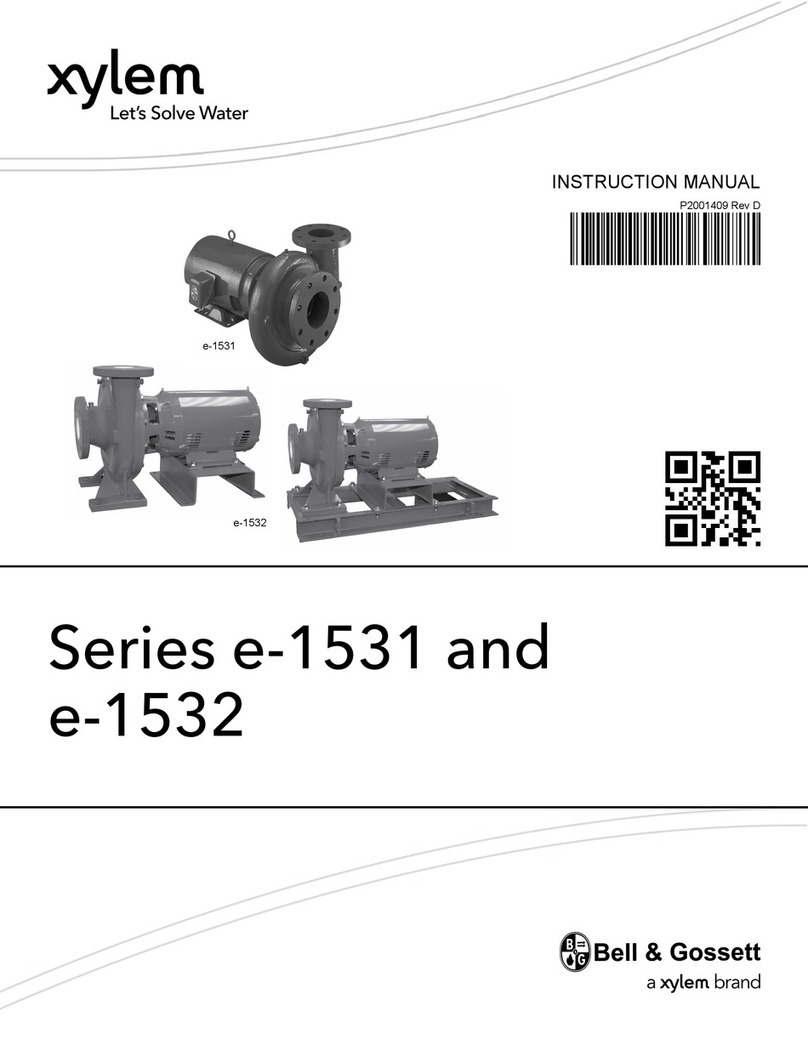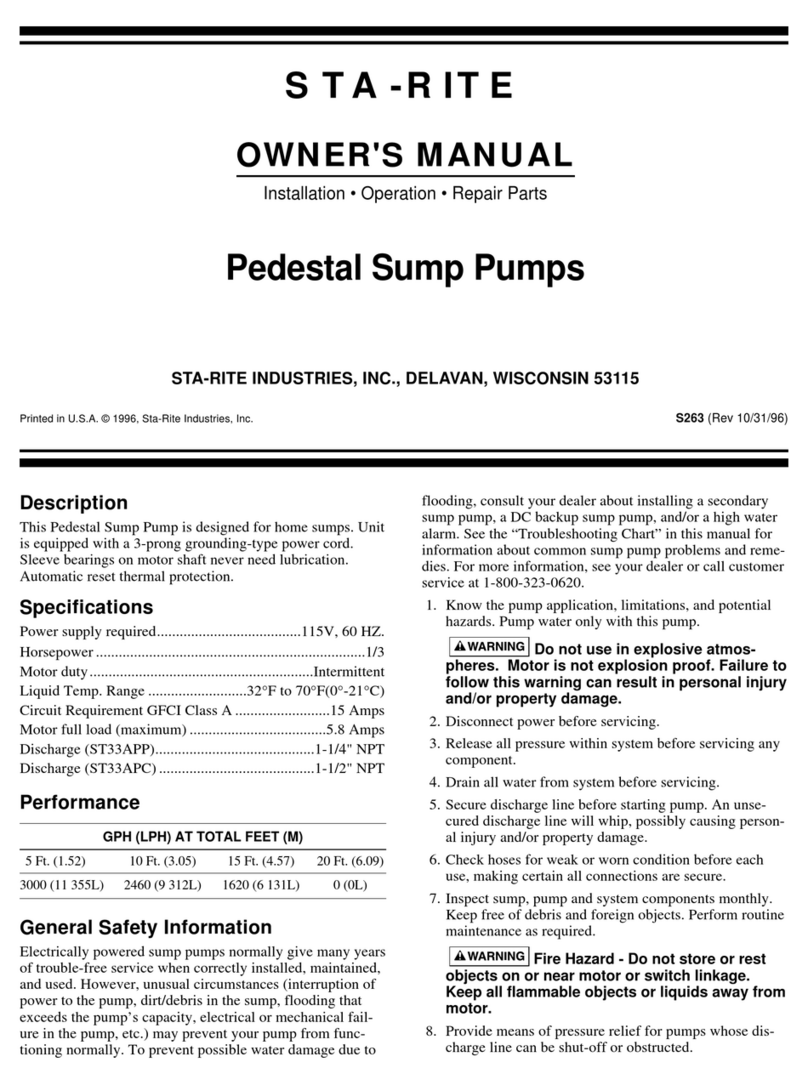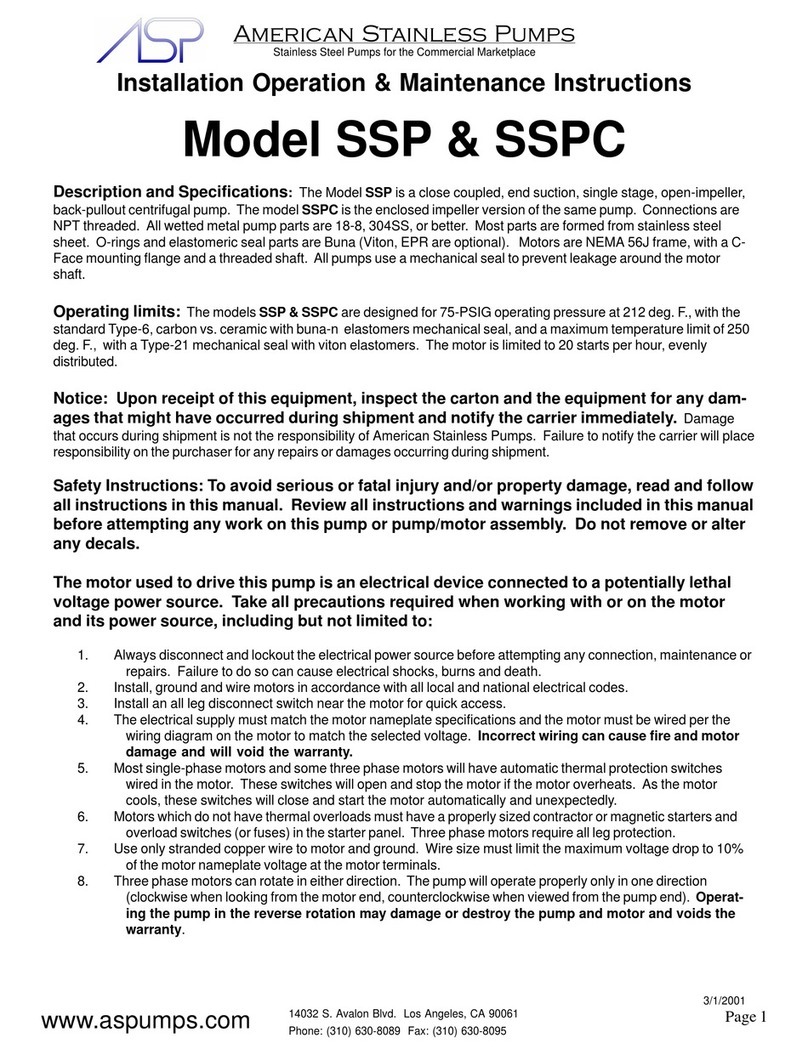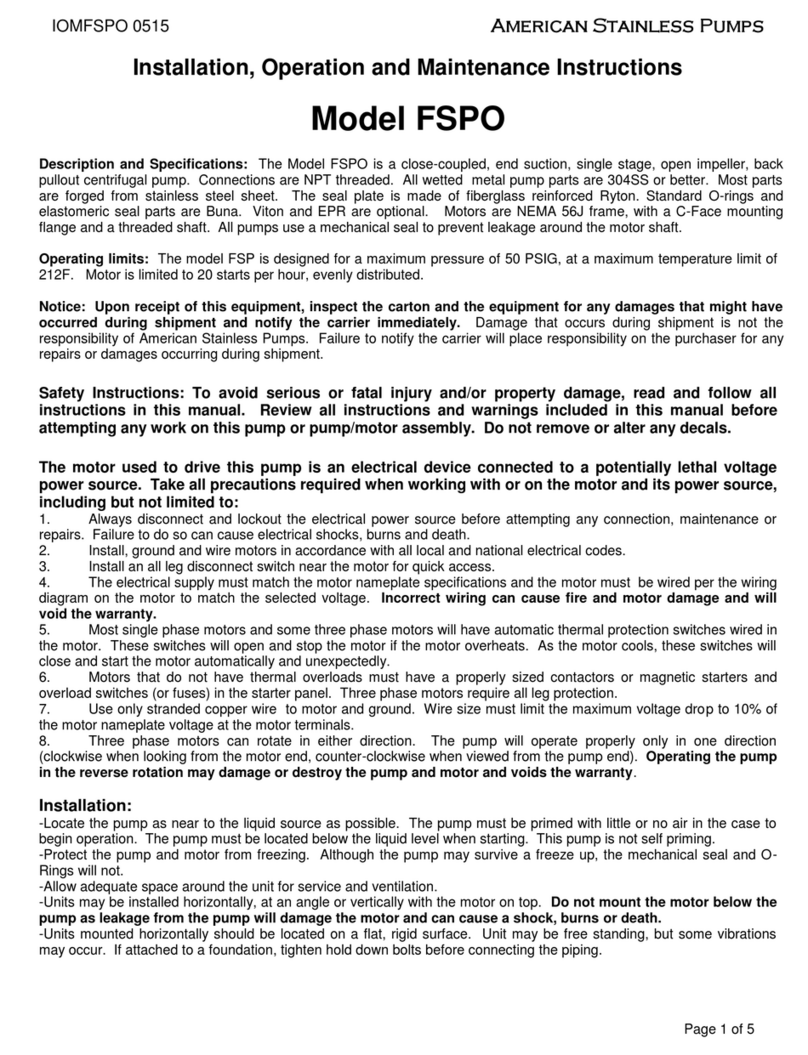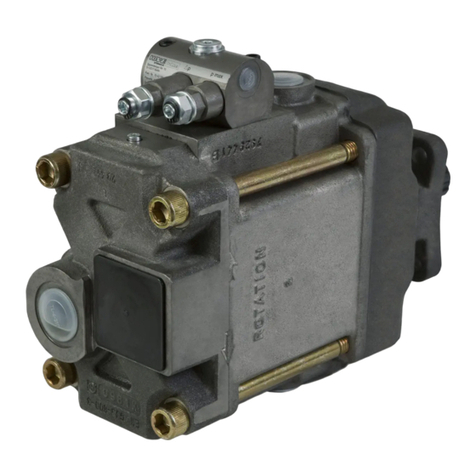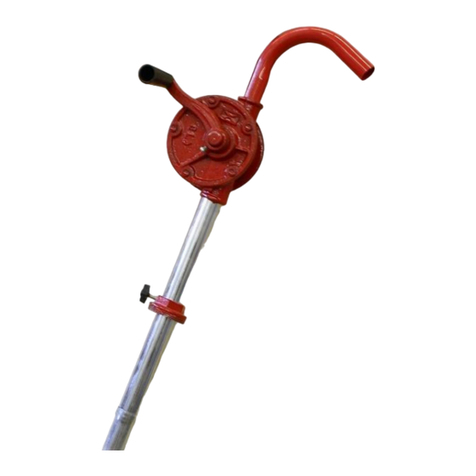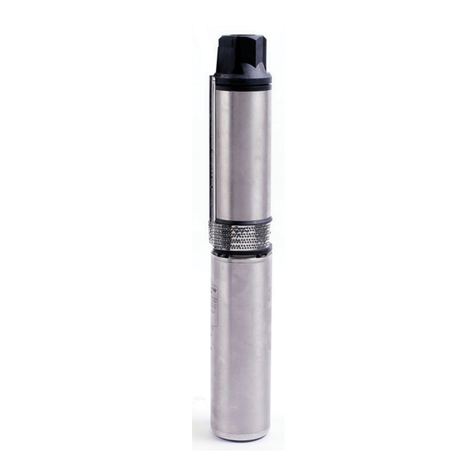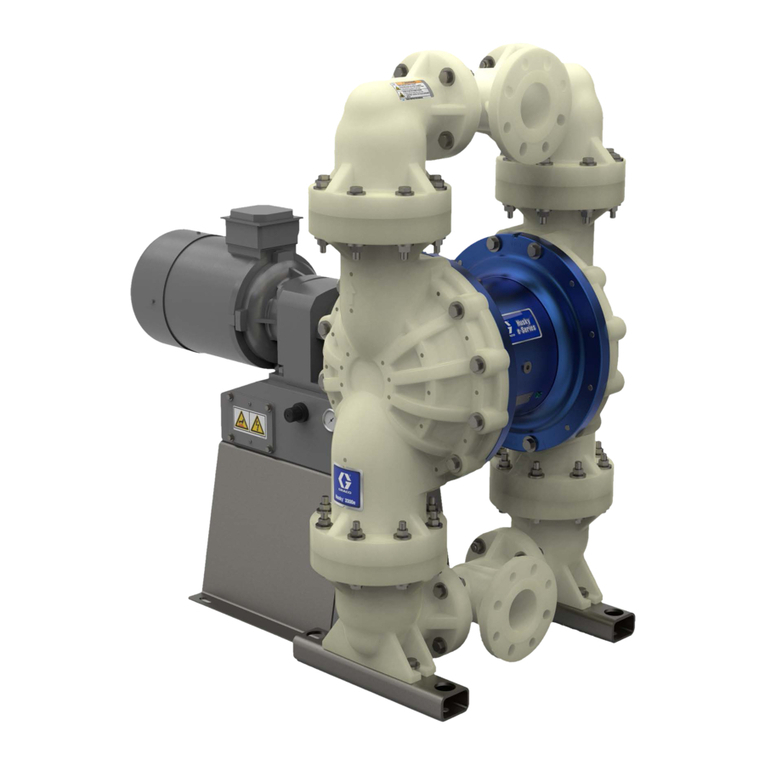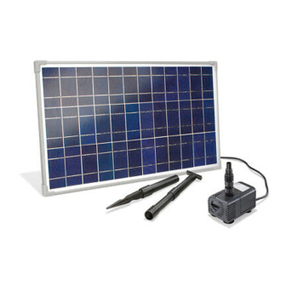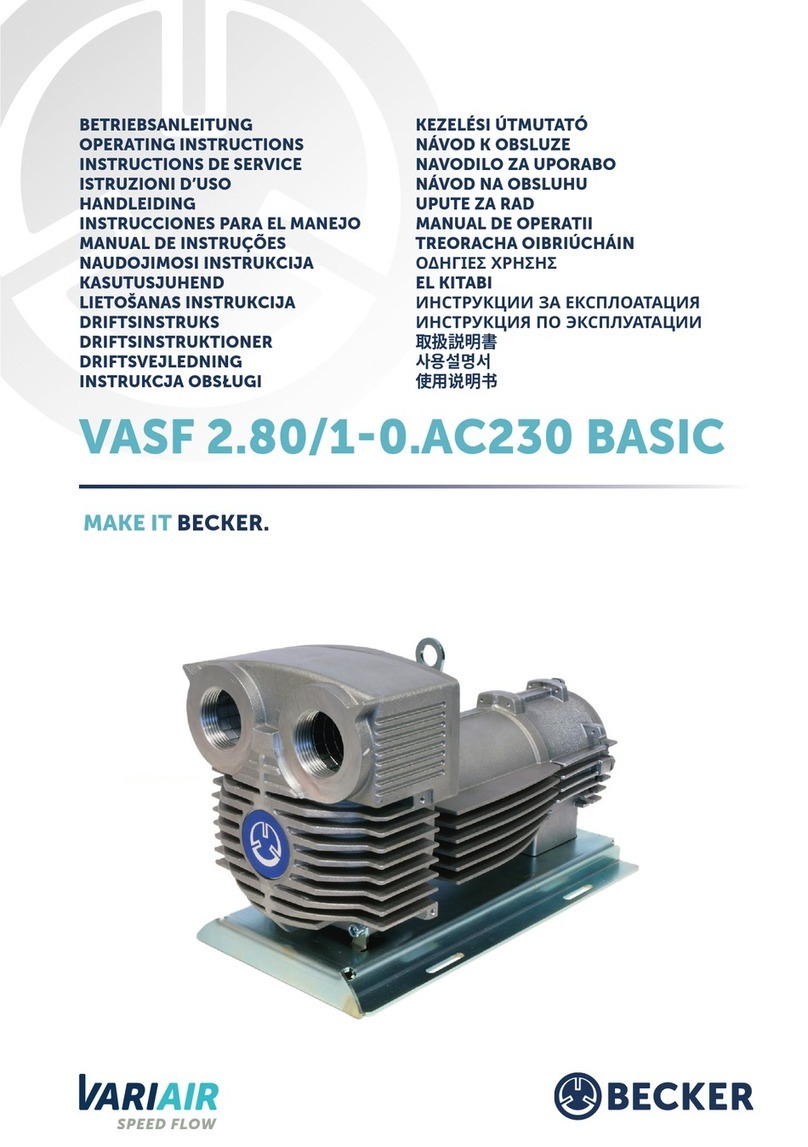
American Stainless Pumps, Inc.
www.aspumps.com 3
Piping:
All piping must be independently supported. No piping loads may be carried by the pump.
Piping should be at least the same size as the pump connections.
Piping to the suction is critical for proper pump operation.
Suction pipe should be short and direct, with a minimum of fittings and turns.
Suction pipe must continuously rise to the pump to avoid air pockets. All pipe connections must be airtight.
If suction pipe is larger than the pump, an eccentric reducer may be needed with the straight side on top to
avoid an air pocket.
If suction of pump is above the liquid source level, a foot valve or other isolation valve will be needed to prime
the pump. A continuous stream of liquid must be made available for the pump suction to hold its prime.
Do not use any suction valve for throttling the pump. This will cause loss of prime and damage to the pump
that is not covered by warranty.
Be sure that the source liquid level is sufficient to prevent vortices from drawing air into the pump.
Install a valve on the discharge line for use in regulating the pump flow and for isolating the pump during
maintenance and inspection.
Disassembly:
Disconnect and lockout the electrical power before attempting any disassembly. Casing may
contain hazardous fluids. Drain and flush and take necessary precautions.
It is not necessary to remove piping from the case to disassemble the pump. Pump is a back pullout design and
unless casing needs to be repaired or replaced, it can stay in place during servicing. Note that it will be much
easier to reassemble on a work bench than when the pump case stays in place.
1. Close all valves and drain pump and pipes and flush if necessary.
2. Remove any motor hold down bolts.
3. Remove the eight (8) case bolts (Item 7CS) with a wrench or socket.
4. Pull the motor and pump internals back out of the case. If the pump and motor are on a bench, pull the case
off of the pump. It may be necessary to gently rock the case back and forth to work it off the pump internals.
There are internal o-rings that will resist this removal.
5. Remove the diffuser front cover from the case. It is sandwiched in place between the case and the diffuser
and should be easy to remove.
6. A locking nut and washer are used keep the impellers from moving axially on the shaft. The locking nut is a
right hand threaded nut. Remove with a wrench while holding the impellers.
7. After removing the locking nut, remove the first stage impeller by sliding it forward and off the shaft. Remove
the floating o-ring from the impeller. There is a small impeller key that may or may not fall out.
8. Remove the diffuser, the diffuser back cover, the diffuser o-ring, the spacer ring, the shaft spacer, the
second stage impeller with its key and floating o-ring, and the spacer washer that is in front of the
mechanical seal. All of these parts should slide easily off. Do not bend or use excessive force on any of
these parts.
9. Remove the rotating element of the mechanical shaft seal. If the rotating element does not come off easily, it
is stuck to the shaft. Pry up the seal plate (Item 400) with screw drivers or pry bars. The seal plate should
compress the seal spring and force the seal off the shaft. If seal is stuck, and you must pry with force, do not
pry towards your face or body. The seal and seal plate can come free unexpectedly and injure you.
10. If the seal plate did not come off with the seal, remove it now. If you plan to replace the stationary seat, you
will need to press it out of the seal plate from the back. Do not push with your finger or you will probably cut
yourself on the edges of the seal plate when the seal pushes out.
11. If you plan to replace the motor, remove the four motor adapter bolts with a 5/16” Allen wrench and remove
the motor adapter plate. If you are not replacing the motor, leave the adapter plate in place.
12. 10. If the motor comes with a rubber deflector, the deflector should go between of the motor and the
adapter plate.
13. Check the impeller floating o-rings that ride on the impeller suction shrouds. Replace if damaged, swollen,
fretted or just worn out. This O-Ring is not necessary for pump operation but it acts as a restriction to
recirculating flow and will improve the pump efficiency. It should be loose enough on the impeller that it can
slide forward when running.
14. Check the interstage o-ring and the case o-ring. Replace if damaged or hard. If the o-rings have been in
service for over a few months, it is best practice to replace.



